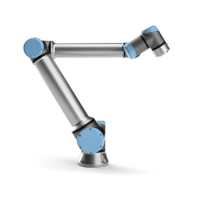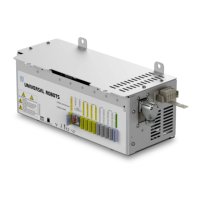SF# and
Safety
Function
Description What happens?
Tole-
rance
PFHd Affects
Joint Torque
Limit
Exceeding the internal joint
torque limit (each joint)
results in a Cat 0 stop3.
This is shown as SF #5 in
the Generation 3 (CB3) UR
robots. This is not
accessible to the user; it is
a factory setting. It is NOT
shown as a safety function
because there are no user
settings and no user
configuration possibilities.
- - - -
SF5
Called
various
names: Pose
Limit, Tool
Limit,
Orientation
Limit, Safety
Planes,
Safety
Boundaries
Monitors the TCP Pose
(position and orientation)
and will prevent exceeding
a safety plane or TCP Pose
Limit. Multiple pose limits
are possible (tool flange,
elbow, and up to 2
configurable tool offset
points with a radius)
Orientation restricted by
the deviation from the
feature Z direction of the
tool flange OR the TCP.
This safety function
consists of two parts. One
is the safety planes for
limiting the possible TCP
positions. The second is
the TCP orientation limit,
which is entered as an
allowed direction and a
tolerance. This provides
TCP and wrist inclusion/
exclusion zones due to the
safety planes.
Will not allow
motion to exceed
any limit settings.
Speed or torques
could be reduced
so motion will not
exceed any limit.
A protective stop
will be initiated to
prevent exceeding
any limit. Will not
allow motion to
exceed any limit
settings.
3 °
40 mm
1.20E-
07
TCP
Tool
flange
Elbow
SF6
Speed Limit
TCP & Elbow
Monitors the TCP and
elbow speed to prevent
exceeding a speed limit.
50
mm/s
1.20E-
07
TCP
Hardware Manual 91 UR5e
15.Safety Functions Tables
Copyright © 2009–2022 by UniversalRobotsA/S. All rights reserved.

